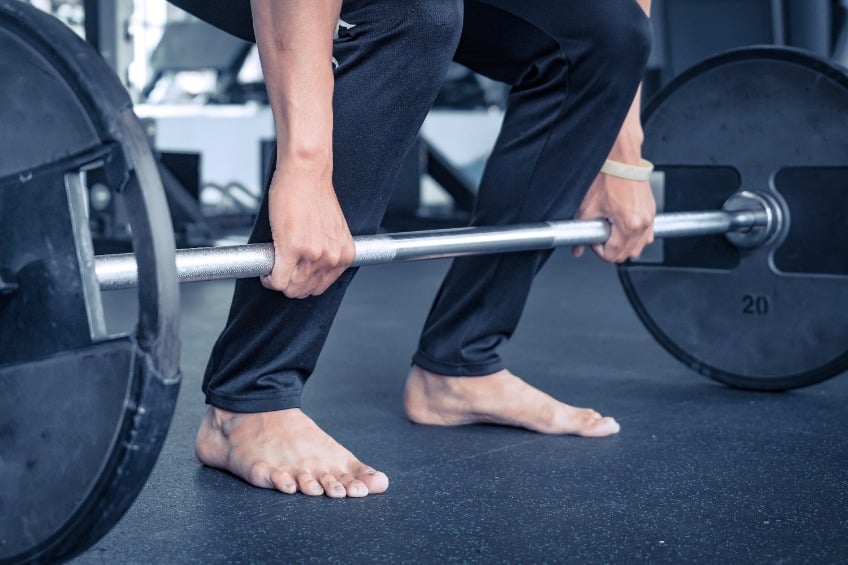By Sean Zucker —
It might be strange to walk into a gym and see somebody working out without shoes. But it’s becoming a common sight thanks to a new exercise trend. Barefoot training is what it sounds like—exercising without footwear or with minimal material enclosing the feet. Like many emerging health trends, there may be some benefits involved. However, many experts advocate caution while noting the practice might even be dangerous.
The bigger or at least first question confronting those exercising without a foot is why. Barefoot training not only brings comfort but may help efficiency according to some limited scientific positioning.
Men’s Health explained recently that the thousands of nerve endings in feet send signals up the body that helps individuals better understand their movements. Human bodies are feedback loops of information where one part connects to something sending a signal to the brain, which then sends one back. In theory, working out barefoot means the brain gets more feedback, which means fewer injuries.
The shape adds that barefoot training can help someone become more in tune with their body. It suggests that going barefoot will heighten a body’s awareness of space and enhance its ability to sense movement, action, and location. The practice will also increase stability, strength and flexibility.
Unfortunately, most of these cited benefits are merely hypotheses not supported by research. Beyond this, many experts warn barefoot training could be unsafe. Ultimately, the noted advantages of barefoot training’s are anecdotal at best, warned Kevin Valenzuela, an assistant professor of biomechanics at California State University Long Beach. Besides, switching quickly to barefoot training can be hazardous if a person’s feet and ankles aren’t already strong and flexible. It can result in wobbling.
“That inward rolling motion is usually not a great thing for the joints and the tissues within the joints,” Valenzuela explained. “What happens at the ankle affects what happens at the knee, which affects the hip.”
Valenzuela’s comments stem from a recent study he authored that examined the deadlift performance differences between barefoot lifters and those wearing shoes. It concluded there was no significant disparity in performance. The research also found that going barefoot also presents far more risks, which led the researchers to recommend against it.
Potential joint injuries aren’t the only threats involved. The New York Times reported that foot damage is also a possibility. Footwear, for example, offers additional protection against heavy gym gear hitting feet while also helping individuals guard against picking up infections from gym floors. Contagious diseases, like athlete’s foot or warts, are rampant in gyms and equipment, it noted.
The uncertainty and potential risks involved in barefoot training don’t necessarily preclude the practice. But they do suggest caution.












